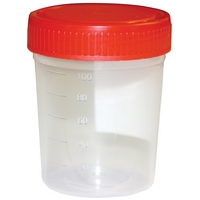How do I Perform Home Insemination?
Home insemination is a relatively simple process. Before you begin ensure your donor has been screened for diseases and checked that he has a high sperm count and good level of sperm motility.
What equipment do I need for home insemination?


Home Insemination Guide:
1. Your sperm donor will firstly need to ejaculate into the specimen cup. Your donor should replace the lid on the cup and pass it to you as son as possible after ejaculation. Your donors’ job is now complete!
2. Get yourself into a comfortable position with your hips raised. If using a vaginal speculum a small amount of lubrication (sperm friendly such as PreSeed) may be required to effectively insert the speculum, but only use a small amount. The woman can very gently insert the speculum into the vagina to locate the cervix or why not ask your partner to help.
Click here for insemination guidance using a softcup.
3. Insert the speculum at a 45 degree angle pointing slightly downward. Open the"bills" of the speculum 2 or 3 cm using the thumb lever. Position the bills so that the cervix "falls" in between. Secure the speculum by clicking the ratchet mechanism (plastic speculum). Make sure that you lock the speculum in place if it is a lockable speculum. Do not move the speculum while it is locked open as it may cause injury.
4. Wait for the sperm to liquefy, this would normally take 10-20 minutes, draw back the syringe once with nothing but air and then push the air out, then slowly suck up the sperm into the syringe (no needle required). The sperm can remain active for a 1-2 hour period as long as it is maintained at just below body temperature however it is best to inseminate as soon as the sperm liquefies.
5. Squeeze the contents of the sperm as far into the vagina as possible and near to the cervix – do not aim at the cervix as this could cause injury to the cervix and the woman could go into cervical shock. Leave the syringe in placefor a few seconds and then slowly withdraw it.
6. If you are using a speculum once the sperm has been inseminated slowly withdraw the speculum slightly to clear the cervix. Loosen the speculum and allow the"bills" to fall together. Continue to withdraw while rotating the speculum to 45 degrees, dispose appropriately as they are single use speculums. Dispose of used syringe and specimen appropriately also as they are also for single use only.
7. Lie down on your back with your hips propped up by a pillow for around 20-30 minutes. This should be ample time to allow the sperm to travel.
Other methods are available such as using a cervical cup however studies suggest that there is little difference in the conception rates and we suggest any method other than that above should be carried out by a medical professional.
Disclaimer:
We would recommend you seek advice from your GP if you feel you need further clarification around Home Insemination Procedures. We strongly recommend you consider all health and legal risks of carrying out insemination methods outside of a licensed fertility clinic.
Please refer to our FAQ's section for more information.
Co-ParentMatch.com will not be held accountable for any future actions or problems that arise as a result of carrying out such procedures)
Related Articles:
Home insemination health tests
Home insemination guide
Home insemination risks
Should I stay lying down after home insemination?